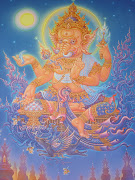 Oscar-Claude Monet was born on November 14, 1840, in Paris. He spent his childhood in the Normandy coastal town of Le Havre, where his father prospered as a grocer and ship chandler. In 1860 Monet met the landscape artist Eugène Boudin, who introduced him to plein-air painting, and he began to produce increasingly ambitious and naturalistic work.
Oscar-Claude Monet was born on November 14, 1840, in Paris. He spent his childhood in the Normandy coastal town of Le Havre, where his father prospered as a grocer and ship chandler. In 1860 Monet met the landscape artist Eugène Boudin, who introduced him to plein-air painting, and he began to produce increasingly ambitious and naturalistic work.In 1859 Monet moved to Paris, where he attended the Académie Suisse beginning in 1860. He returned to Le Havre in 1862 and worked in the plein-air mode alongside Boudin and Dutch painter Johan Barthold Jongkind. In 1862 he returned to Paris to enroll in the studio of Charles Gleyre, where his fellow students included Frédéric Bazille and Alfred Sisley. Despite some success in 1865, when two of his works were exhibited at the Salon, by 1867 financial difficulties forced Monet to return to his family in Le Havre, leaving his pregnant companion, Camille-Léonie Doncieux, in Paris, where she gave birth to their first son, Jean.
In 1874, having banded together with other artists to form the Société Anonyme des Artistes, Monet submitted his painting Impression, Sunrise (1872, Musée Marmottan, Paris) to the group's first exhibition. The work caused a sensation, and gave a name to the burgeoning movement, when the critic Louis Leroy lampooned the group as “impressionists,” a term the artists themselves soon adopted without satirical inflection.
In 1878, with financial troubles looming and his wife gravely ill, the Monets embarked on an unorthodox joint household arrangement in Vétheuil with the family of former patron Ernest Hoschedé. After Camille’s death, Monet and Alice Hoschedé continued to live together, waiting until Ernest Hoschedé died before marrying in 1892. Monet continued to exhibit with the Impressionists on an irregular basis, choosing also to show his work at the Salon in 1880, in a solo exhibition at Galerie Durand-Ruel in Paris in 1883, and at several of Georges Petit’s Expositions Internationales de Peinture. In 1889 Galerie Georges Petit staged a major retrospective of his work, showing 145 paintings. Two years later Durand-Ruel mounted an exhibition of Monet's first series paintings, Grainstacks, which were met with great critical acclaim. The artist continued his exploration of series in his paintings of poplars and of the Rouen Cathedral, documenting in a succession of canvases subtle shifts in light or focus.
By 1890 Monet was financially secure enough to purchase a house at Giverny, later adding adjacent land and installing both the water-lily garden and Japanese bridge, which he would later famously paint in series. Between 1899 and 1901 he made three trips to London to paint views of the Thames River. Over the next decade he completed more series studies of the lily garden at Giverny, which he continued to enlarge. Alice’s death in 1911 was succeeded by that of his elder son in 1914. The following year Monet began work on an expansive new garden studio, in which he would fabricate his Grandes-Décorations, the large-scale water-lily series that would occupy him until his death. He made plans to turn a large number of these works over to the state to be housed in specially built galleries in the Paris Orangerie. The installation of twenty-two paintings opened to the public in May 1927, five months after his death, at the age of eighty-six.










 Painting, Oil on Canvas
Painting, Oil on Canvas




